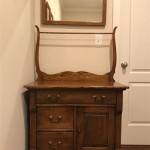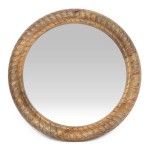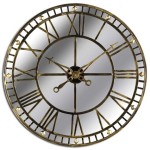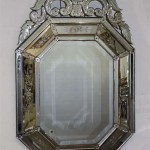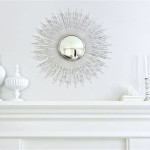Can Convex Mirrors Form Magnified Images?
Convex mirrors, characterized by their outwardly curving reflective surface, are known for their wide field of view. This characteristic makes them useful in various applications, from security mirrors in shops to side-view mirrors in vehicles. A common question arises regarding their ability to magnify images, given their diverging nature. This article explores the image formation properties of convex mirrors and addresses the question of magnification.
Understanding Convex Mirror Image Formation
Light rays incident on a convex mirror diverge upon reflection. These diverging rays appear to originate from a point behind the mirror, forming a virtual image. This virtual image possesses distinct characteristics:
* **Virtual:** The image cannot be projected onto a screen, as it is formed by the apparent intersection of light rays. * **Erect:** The image is upright, maintaining the same orientation as the object. * **Diminished:** The image is always smaller than the object. * **Located behind the mirror:** The image appears to reside within the mirror itself, between the mirror's surface and its focal point.
The Nature of Virtual Images
Virtual images are fundamentally different from real images. Real images are formed by the actual convergence of light rays and can be projected onto a screen. Examples include images formed by concave mirrors or converging lenses. Virtual images, however, are formed by the apparent intersection of diverging rays. The human eye perceives these diverging rays as originating from a point behind the mirror, creating the illusion of an image.
Magnification and Convex Mirrors
Magnification, in optics, refers to the ratio of the image height (hi) to the object height (ho). It is expressed as:
M = hi / ho
For convex mirrors, the magnification is always less than 1. This signifies that the image height is always smaller than the object height, resulting in a diminished image. The magnification value approaches zero as the object distance increases, meaning the image becomes increasingly smaller as the object moves farther away from the mirror.
Why Convex Mirrors Always Form Diminished Images
The diverging nature of reflected rays from a convex mirror is the key reason for the diminished image size. As light rays diverge after reflection, they never converge to form a real image. The virtual image formed by the apparent intersection of these rays is always located between the mirror's surface and its focal point. This positioning, along with the diverging rays, geometrically restricts the image size to be smaller than the object size.
Applications of Diminished Images
While the inability to magnify images might seem like a limitation, it is precisely this characteristic that makes convex mirrors useful in certain applications: * **Wider Field of View:** The diminished image size allows a convex mirror to reflect a wider area than a plane mirror of the same size. This wider field of view is critical for safety and security applications. * **Reduced Blind Spots:** In vehicles, convex side-view mirrors provide a wider view, minimizing blind spots and enhancing driver awareness. * **Security Surveillance:** Convex mirrors are commonly used in stores and other public spaces to provide a panoramic view, aiding in security monitoring.
The Mirror Equation and Convex Mirrors
The mirror equation relates the object distance (do), image distance (di), and focal length (f) of a mirror:
1/do + 1/di = 1/f
For convex mirrors, the focal length is considered negative. The image distance is also negative, as the image is virtual and located behind the mirror. Applying these sign conventions to the mirror equation, one can calculate the image distance and magnification for any given object distance.
Comparing Convex Mirrors to Concave Mirrors
* **Image Formation:** Convex mirrors always form virtual, erect, and diminished images. Concave mirrors can form both real and virtual images, which can be either erect or inverted, and magnified or diminished, depending on the object's position relative to the focal point. * **Field of View:** Convex mirrors offer a wider field of view than concave mirrors. * **Applications:** Convex mirrors are used for safety and surveillance, while concave mirrors are used in telescopes, headlights, and shaving mirrors, among other applications.
Ray Diagrams and Image Construction
Ray diagrams are graphical tools used to visualize image formation in mirrors. For convex mirrors, two principal rays are typically used: * **Parallel Ray:** A ray parallel to the principal axis appears to diverge from the focal point after reflection. * **Center of Curvature Ray:** A ray directed towards the center of curvature is reflected back along its original path.
By tracing these rays, one can determine the location and size of the virtual image formed by the convex mirror. The intersection of the extrapolated reflected rays behind the mirror marks the position of the virtual image.
Can A Convex Mirror Form Magnified Image Quora
Can A Convex Mirror Form Magnified Image Quora
Can A Convex Mirror Form Real Image Quora
Is It Possible For A Convex Mirror To Produce Real Image When The Object Virtual Quora
Can A Convex Mirror Produce Real Image
Can A Convex Mirror Form Real Image Quora
Can A Convex Mirror Form Real Image Quora

Magnification Produced By A Convex Mirror Is Always Equal To1b Less Than 1c More 1d Zero

Which Of These Is Definitely A Characteristic Images Formed By Convex Mirror Virtual B Real C Inverted D Magnified

Concave Mirrors And Convex Ray Diagrams Image Formation Examples



